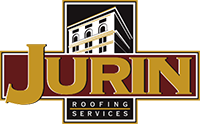Roof Leak Diagnosis and Repair Tips
Are you having issues with on-going roof leaks that cannot be identified?
When it comes to diagnosing and repairing your roof, do you get multiple opinions as to the source of your roof leak?
If the source of the leak is proving difficult to locate, there are several methods for finding these pesky leaks. Water testing may be necessary or non-destructive moisture scans can also be used to identify sources of intrusion locations and trapped moisture.

It is also possible that the roof itself is not the source of the leak. I’ve seen many times where the roof wasn’t the issue and the source of the leak could be related to cladding, glazing, and wall penetrations etc.
Roof leak diagnosis is an upfront added expense sure, but what you should consider is the outcome of on-going leaking activity. Roof leaks that are not addressed can lead to mold issues and deck deterioration.
Look at is this way, what expenses are you incurring to have multiple trips by the same crew or company to perform visual inspections and repairs to suspected leak sources? Upset tenants and customers along with further damage to the roof system, substrates, mechanical, electrical, and interior finishes are several issues related to on-going leaks.
3 Important Things to Consider When Diagnosing and Repairing Roof Leaks
#1 – Once an emergency temporary roof repair is performed, identify why the roof failed at this location.
There are several reasons the roof may have failed. Typically roofs fail at detail locations as a result of lack of proper maintenance. These items are typically easily identifiable and repaired.

#2 – What is the best course of action to take when repairing my roof?
There are several items to address when considering the best course of action. Are the questions being asked? Get a few opinions and go with what makes the most economical sense.
Here is a list of items that should be considered and evaluated to repair the roof in the most economical manner:

If your roof is generally still in good shape, proper permanent repairs are important to get the most out of your investment. If your roof is shot and needs to be replaced, too much money spent on repairs can just become a waste at that point. Make sure your contractor can tell you how many years your roof has left before you start throwing good money after bad.
#3 – Preventative Maintenance
Whether your roof leak results in a simple repair to the membrane due to lack of maintenance or if the time has come to have a new roof installed, we can’t say this enough…
MAINTENANCE, MAINTENANCE, MAINTENANCE!!!!
It’s possible the issues you are experiencing now could have been prevented through regular roof inspections and maintenance.

The number one cause of premature roof failure is the lack of regular roof maintenance. Roofing industry experts say that a building owner who budgets only 5 cents per square foot per year can avoid losing three times that much per square foot each year. Your roof should be checked at least twice a year.






